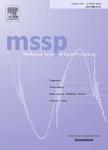版权所有:内蒙古大学图书馆 技术提供:维普资讯• 智图
内蒙古自治区呼和浩特市赛罕区大学西街235号 邮编: 010021

作者机构:Univ Tecn Federico Santa Maria Dept Civil Engn Valparaiso Chile Leibniz Univ Hannover Inst Risk & Reliabil D-30167 Hannover Germany Tongji Univ Int Joint Res Ctr Engn Reliabil & Stochast Mech Shanghai 200092 Peoples R China Univ Liverpool Inst Risk & Uncertainty Liverpool L69 7ZF Merseyside England Univ Liverpool Sch Engn Liverpool L69 7ZF Merseyside England
出 版 物:《MECHANICAL SYSTEMS AND SIGNAL PROCESSING》 (机械系统与信号处理)
年 卷 期:2022年第162卷
页 面:108042-108042页
核心收录:
基 金:CONICYT, Chile (National Commission for Scientific and Technological Research) DAAD, Germany under CONICYTPFCHA/Doctorado Acuerdo Bilateral DAAD Becas Chile CONICYT, Chile
主 题:Bayesian updating Discrete-continuous optimization Feasible design space Markov sampling method Reliability-based optimization Stochastic optimization
摘 要:In this work attention is directed to general structural optimization problems considering discrete-continuous design variables. The optimization problem is formulated as the minimization of an objective function subject to multiple design requirements. The mathematical programming statement is set into the framework of a Bayesian model updating problem. Constraints are handled directly within the proposed scheme, generating designs distributed over the feasible design space. Based on these samples, a set of designs lying in the vicinity of the optimal solution set is obtained. The Bayesian model updating problem is solved by an effective Markov chain Monte Carlo simulation scheme, where appropriate proposal distributions are introduced for the continuous and discrete design variables. The approach can efficiently estimate the sensitivity of the final design and constraints with respect to the design variables. In addition, the numerical implementation of the optimization algorithm depends on few control parameters. For illustration purposes, the general formulation is applied to an important class of problems, specifically, reliability-based design optimization of structural systems under stochastic excitation. Three numerical examples showing the effectiveness and potentiality of the approach reported herein are presented.